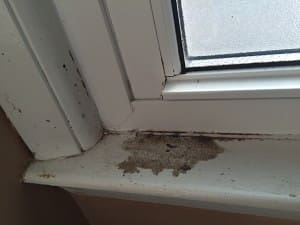Be careful when a contractor tells you that you have mold and without having the experience or medical background, alerts you to an issue that may not be a problem. Two or three times a year I visit customers who have had contractors come by and just scare them — and for what reason? Sometimes it is to justify a dramatically higher price. Sometimes it is so the customer will believe they are an expert.
So if you’re one of those people who has been victimized by a scare tactic, stop, take a breath, and research the facts. The federal governments Center for Disease Control and Prevention (CDC) has a great article about mold. They point out “the term “toxic mold” is not accurate.”
Understand this; molds are everywhere. They are in the air we breathe, on surfaces we touch and can even be in our food or water. Not all molds are bad and very few molds will cause serious health issues but some do merit concern. Here’s what the experts at the CDC say:
In 2004 the Institute of Medicine (IOM) found there was sufficient evidence to link indoor exposure to mold with upper respiratory tract symptoms, cough, and wheeze in otherwise healthy people; with asthma symptoms in people with asthma; and with hypersensitivity pneumonitis in individuals susceptible to that immune-mediated condition.
If you have mold in your home, understand that mold grows best in warm and moist conditions. Starving mold of additional moisture while drying out areas that have already been affected will help retard additional growth. I’ve seen people seal off areas they were concerned about with plastic — creating a little greenhouse of warmth that prevents moisture from escaping. What they’ve inadvertently done is create a perfect environment for mold to grow.
So what areas are most susceptible to mold
Roofs: When roofs start to leak the water gets into the wood and begins to rot. Mold is typically a big part of the breakdown process of roof decking. Water hits the wood then the wood swells, creating an opportunity for wood to rot and if that decking freezes (and expands) while it’s swollen by water, it will push the wood fibers apart. Mold takes advantage of this and that is why most cedar shake shingles that we remove are black. That black mold is in many homes that have or have had cedar shake roofs.
Windows: Window sills, which tend to be places where condensation collects, sometimes are affected by molds are mildew. Areas where the glass meets the window structure also tend to be problem areas. Bathrooms tend to be the areas where people see most mold since showers are wet and they dump moisture into the air.
Basements: When water pools, due to faulty gutters, flooding or landscaping that doesn’t shed water either due to the wrong type of soils being used next to a house or because of an inappropriate pitch, water can seep into basements. When that happens, it can impregnate concrete walls and those areas can develop mold. For cleaning tips for those instances, click here.
Siding: Sometimes houses are just sealed up too tight. Be sure to use a breathable house wrap instead of plastic. House wrap is something that typically goes underneath the siding. Products like Raindrop by Green Guard are designed to sheet water away.

